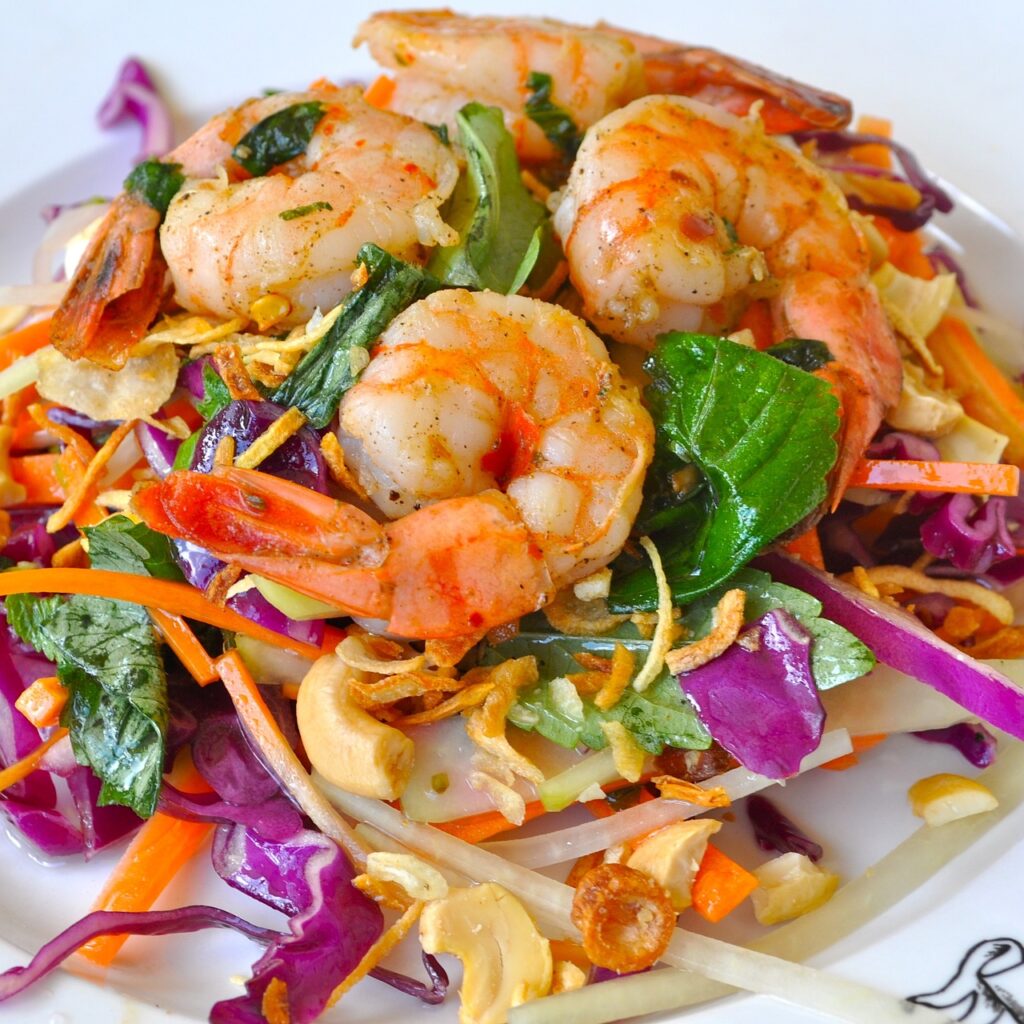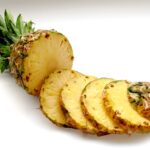When it comes to introducing shrimp to your baby’s diet, safety and nutrition are key factors to consider. Shrimp is generally a safe food for babies, but it’s important to introduce it slowly and watch for any signs of allergic reactions. The source and preparation of shrimp should also be carefully considered to avoid any risk of food poisoning.
On the nutritional side, shrimp is a good source of protein, omega-3 fatty acids, and other essential nutrients that can contribute to your baby’s growth and development. It can also promote brain and eye development, making it a healthy addition to your baby’s diet.
When preparing shrimp for your baby, it’s important to cook it thoroughly to avoid any risk of food poisoning. Steaming, sautéing, or boiling shrimp and cutting it into small pieces are all good options for easy eating. It’s also best to avoid adding any salt or seasoning to keep the dish simple and healthy.
If your baby doesn’t like shrimp or has an allergy to it, there are other seafood options you can try. Salmon, tuna, and cod are all healthy choices that can be introduced to your baby’s diet.
To conclude, introducing shrimp to your baby’s diet can be a healthy and tasty option. However, it’s important to do so carefully, watching for any signs of allergic reactions and being cautious about the source and preparation of the shrimp.
Is Shrimp Safe for Babies?
Shrimp is a generally safe food for babies, but parents need to keep a few things in mind before introducing it to their little ones. First, it’s important to introduce the shrimp in small amounts and watch for any allergic reactions. If none are present, gradually increase the amount given over time.
Secondly, parents need to be careful about where they source the shrimp from and how it is prepared. Shrimp can contain harmful bacteria if not handled and cooked properly, so it’s important to buy from reputable sources and cook the shrimp thoroughly.
Parents should also avoid adding any salt or seasoning to the shrimp to keep it as healthy as possible for their babies.
By taking these precautions, parents can safely introduce shrimp into their baby’s diet and provide them with a delicious and nutritious source of protein and essential nutrients.
Nutritional Benefits of Shrimp for Babies
Shrimp is highly nutritious for babies as it contains essential nutrients like protein and omega-3 fatty acids. These nutrients can help with brain and eye development, making shrimp a healthy addition to your baby’s diet. Shrimp is also a good source of vitamins and minerals like selenium, vitamin B12, and phosphorus, which are important for maintaining a healthy immune system and promoting bone health.
One of the key benefits of introducing shrimp in your baby’s diet is its high protein content. Protein is essential for the growth and repair of tissues in the body. Shrimp also contains long-chain polyunsaturated fatty acids (LCPUFA), which play a crucial role in the development of the brain and eyes. LCPUFA can reduce the risk of developmental disorders and improve cognitive function in babies.
Moreover, shrimp is an excellent source of antioxidants that can protect the body against harmful free radicals. Antioxidants are important for maintaining a healthy immune system and reducing the risk of chronic diseases.
When introducing shrimp to your baby, make sure to cook it thoroughly to avoid any risk of food poisoning. You can steam, sauté, or boil the shrimp and cut it into small pieces for easy eating. Avoid adding any salt or seasoning to keep it simple and healthy.
Overall, introducing shrimp in your baby’s diet can be a great way to ensure they get a balanced and nutritious diet. Just make sure to introduce it slowly and watch for any signs of allergic reactions.
How to Prepare Shrimp for Babies
When introducing shrimp to your baby, it’s important to prepare it correctly. The best way to ensure that the shrimp is safe to eat is to cook it thoroughly. You can steam, sauté, or boil the shrimp, and then cut it into small pieces for your baby to eat. It’s important to avoid adding any salt or seasoning, as these can be harmful to your baby’s health.
When cooking shrimp, make sure to remove the shell and devein it thoroughly. Shrimp shells can be a choking hazard for babies, so it’s important to remove them before serving. Additionally, deveining the shrimp removes any potential toxins and makes it easier for your baby to digest.
One option for cooking shrimp for your baby is to steam it. Simply place the shrimp in a steaming basket or colander over a pot of boiling water and steam for 5-7 minutes, or until the shrimp is pink and opaque.
Another option is to sauté the shrimp in a small amount of olive oil. Heat the oil in a pan over medium heat, add the shrimp and cook for 3-5 minutes, stirring occasionally, until the shrimp is pink and fully cooked.
Boiling the shrimp is also an option. Simply bring a pot of water to a boil, add the shrimp, and cook for 2-3 minutes until pink and fully cooked.
By following these preparation tips, you can ensure that the shrimp is safe and healthy for your baby to eat. Remember to introduce new foods slowly and watch for any signs of allergic reactions.
Other Seafood Options for Babies
If your baby doesn’t like or has an allergy to shrimp, don’t worry. There are plenty of other seafood options that can be introduced to your little one’s diet. Salmon is a great choice as it is high in omega-3 fatty acids that can support brain and eye development. Tuna is another healthy option that is rich in protein and other essential nutrients. Cod is also a good choice as it is packed with vitamins and minerals, including vitamin D, which is important for bone health.
When introducing any new food to your baby, it’s important to do so slowly and watch for any allergic reactions. It’s also best to choose fresh, high-quality seafood and prepare it in a healthy way, such as steaming or baking. And remember, always consult with your pediatrician before introducing any new food to your baby’s diet.
Conclusion
If you decide to introduce shrimp to your baby’s diet, it’s important to remember to do so carefully. While it can be a healthy and tasty option, there are some things to keep in mind. As previously mentioned, be sure to introduce it slowly and watch for any signs of allergic reactions. Additionally, it’s important to be cautious about the source and preparation of the shrimp to avoid any risk of food poisoning.
When preparing shrimp for your baby, it’s recommended to cook it thoroughly to ensure it’s safe to eat. Steaming, sautéing, or boiling are great cooking options, and cutting the shrimp into small pieces will make it easier for your baby to eat. Lastly, it’s best to avoid adding any salt or seasoning to the shrimp to keep it simple and healthy.
If your baby doesn’t like shrimp or has an allergy to it, there are other seafood options you can try. Salmon, tuna, and cod are all healthy choices that can be introduced to your baby’s diet. Remember, each baby is different, and it’s important to watch for any signs of discomfort or allergic reactions when introducing new foods. Always consult with your pediatrician before introducing any new foods to your baby’s diet.


